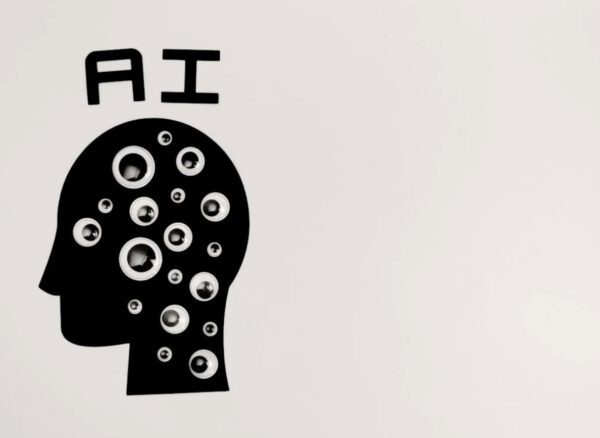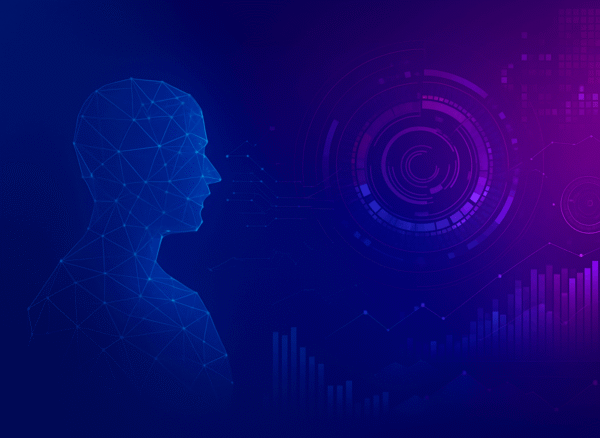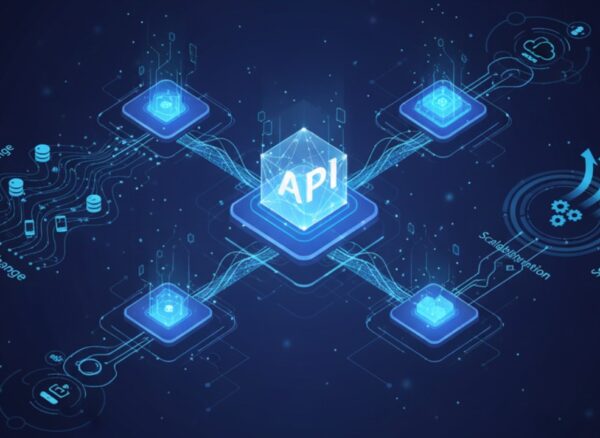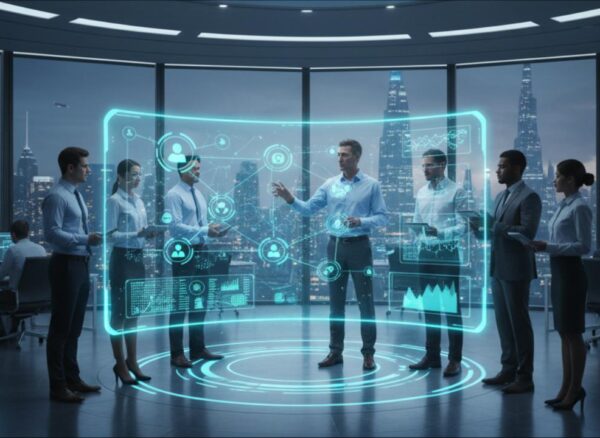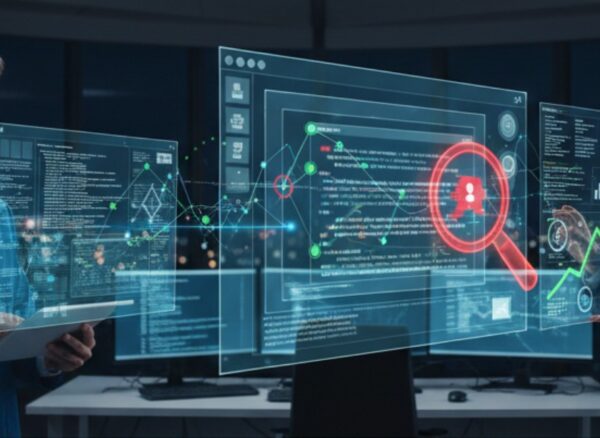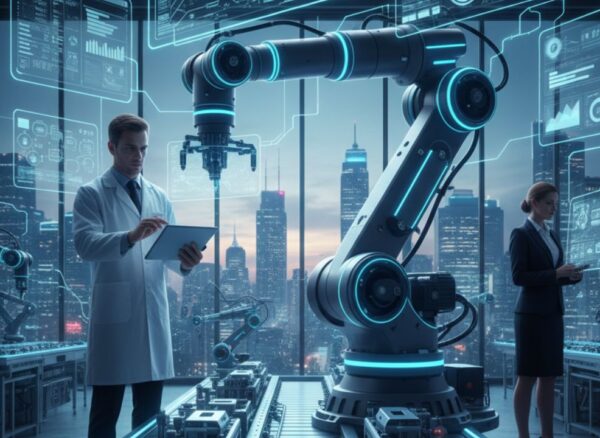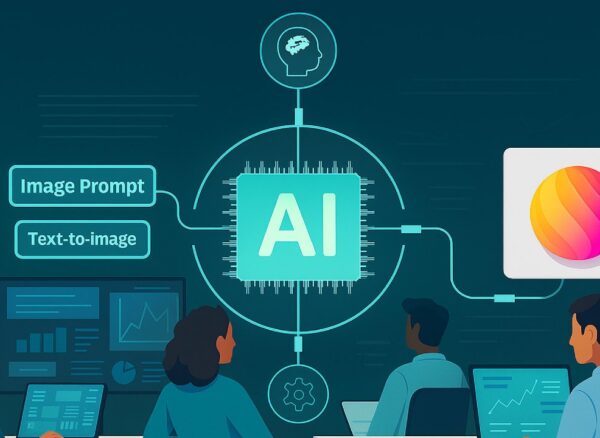
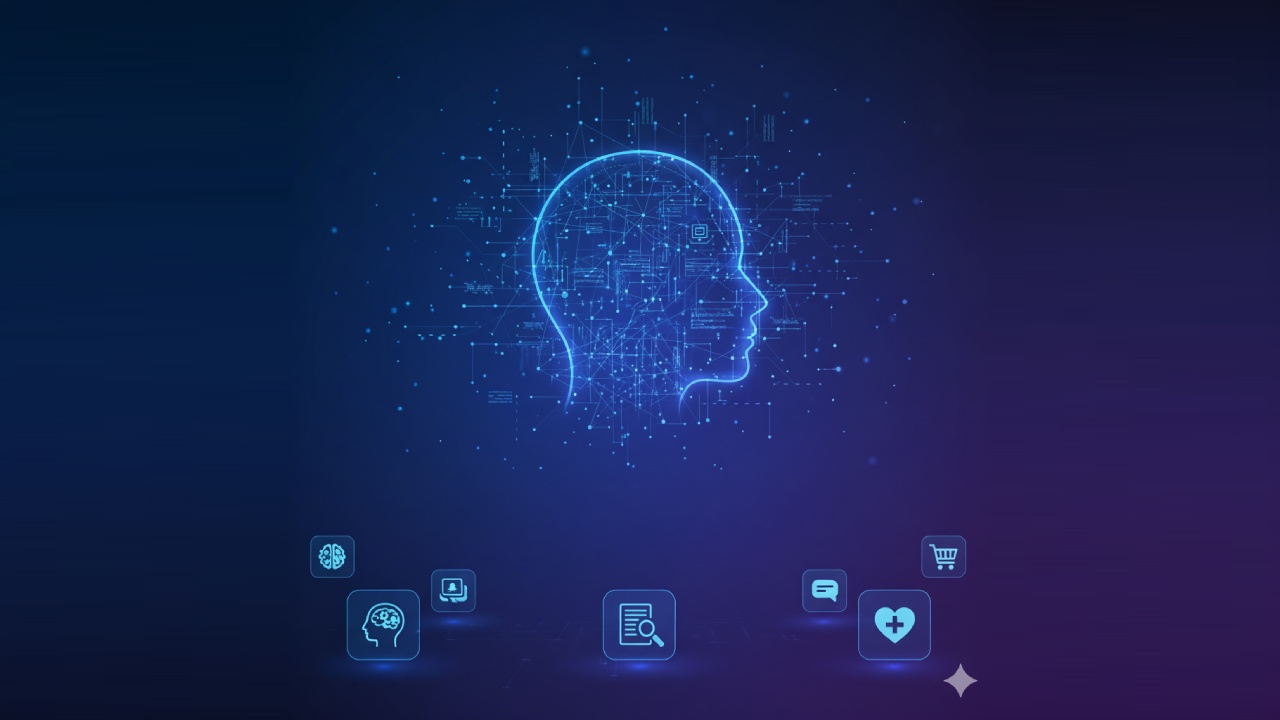
Ever scrolled through Netflix and been a little spooked by how perfectly its recommendations match your taste? Or maybe you’ve asked Siri to set a reminder and wondered how a tiny box can understand your voice? You’re not alone. What you’re experiencing is the quiet revolution of Artificial Intelligence (AI), and it’s no longer just a sci-fi fantasy.
While movies have taught us to picture AI as a menacing, all-knowing robot, the reality is far more subtle—and far more integrated into our daily lives. AI is the invisible force that makes our digital world smarter, more personalized, and more efficient. It’s not a future technology; it’s a part of our present, woven into the very fabric of our routines.
So, let’s peel back the curtain and explore how AI is not only a powerful tool for businesses but a fascinating and relatable part of your own life.
What is AI, Really? A Simple Analogy
At its core, AI is simply a computer system designed to mimic human cognitive functions like learning, problem-solving, and perception. Think of it like a student:- You give it data (the textbooks): A massive dataset of photos, text, or sounds.
- It learns from that data (the lessons): It identifies patterns and connections, like recognizing that a photo of a cat has certain features (whiskers, pointed ears).
- It applies what it learned (the exam): When you show it a new photo, it can use its knowledge to correctly identify that it’s a cat.
The AI That Lives in Your Pocket (and Your Living Room)
The most relatable examples of AI are the ones we interact with every single day. They’ve become so commonplace that we rarely stop to think about the incredible AI technology working behind the scenes.Your Personal DJ: Spotify and Netflix Recommendations
Think about the last time you opened a streaming service. The playlist or movie suggestions weren’t random. AI algorithms analyzed your viewing history, what you skipped, what you re-watched, and even what time of day you watched it. It then compared your data to millions of other users with similar habits to predict what you’ll enjoy next. This is AI at its most helpful—saving you from endless scrolling and introducing you to new favorites.The Voice in the Machine: Siri, Alexa, and Google Assistant
When you say, “Hey Google, what’s the weather like?” you’re using Natural Language Processing (NLP), a field of AI. The system doesn’t just recognize the sound of your voice; it processes the words, understands the context of your question, and pulls the relevant information to give you a coherent, human-like answer. It’s a prime example of how AI makes technology feel more intuitive and natural to use.The Shopping Guru: AI in Online Retail
Have you ever added a shirt to your online cart and suddenly seen suggestions for matching pants and shoes? This is AI-powered personalization at work. It anticipates your needs and preferences, creating a more seamless and enjoyable shopping experience. Behind the scenes, chatbots handle routine customer service questions, freeing up human staff to tackle more complex issues.The Bigger Picture: AI’s Impact on the World
Beyond our personal devices, AI is tackling some of the world’s most complex challenges, proving its value far beyond convenience.In the Doctor’s Office: A New Partner for Healthcare
AI is helping doctors in ways that were unimaginable just a few years ago. In a real-world scenario, an AI system can analyze thousands of medical images, like X-rays or CT scans, in a fraction of the time it would take a human. This helps doctors detect diseases like cancer or Alzheimer’s in their earliest stages, leading to faster diagnosis and treatment. It’s not about replacing doctors but giving them a powerful tool to enhance their expertise.On the Assembly Line: Smarter Manufacturing
From car factories to electronics plants, AI-powered robots are automating repetitive and dangerous tasks. This doesn’t just increase efficiency; it also makes the workplace safer for human employees. AI can also predict when a machine part is about to fail, allowing for proactive maintenance and preventing costly production delays. This kind of predictive analysis is a major benefit of AI.The Human Element: Navigating the Future of AI
As with any powerful technology, the rise of AI comes with important questions. What does it mean for jobs? How do we ensure fairness and ethical use? These are valid concerns that require thoughtful discussion and regulation. However, the prevailing view is that the future of AI is not one of human replacement, but of human augmentation. AI will take over the tedious and routine work, allowing people to focus on tasks that require creativity, critical thinking, and emotional intelligence—skills that are uniquely human. The most successful professionals of tomorrow will be those who can work collaboratively with AI.Related Post
How AI Improves the Language Learning Experience
Discover how Artificial Intelligence is transforming language learning. From personalized lessons and real-time feedback to AI chatbots and immersive VR experiences, explore how AI makes…
Cloud Computing Essentials: Choosing the Right Platform for Your Business
As more companies move to the cloud, selecting the right service—AWS, Azure, or Google Cloud—can be challenging. This guide compares the top cloud platforms to…
How VAPT Can Fortify Your Business Against Cyber Threats
Don't wait for a cyberattack to happen. Learn how a VAPT (Vulnerability Assessment and Penetration Testing) can proactively find and fix security weaknesses in your…
We provide the expertise and support to propel your business forward in the digital landscape.
Address Business
Unit No 320 Sagar Sarita Industrail
Permises Co-op Soc Ltd, Prabhat
Industrial Complex,
Dashisar East Mumbai -400068
Dashisar East Mumbai -400068
Contact with us
Call: +918369581081
Working time
Mon - Sat: 9.00am - 6.00pm
Holiday : Closed
